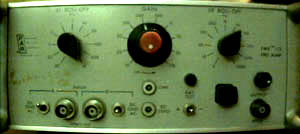
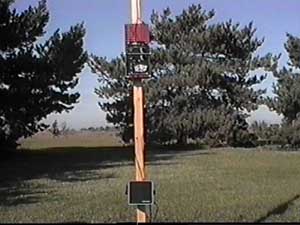
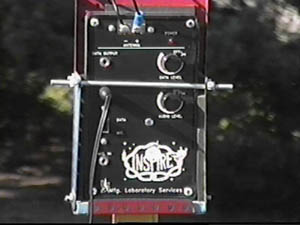
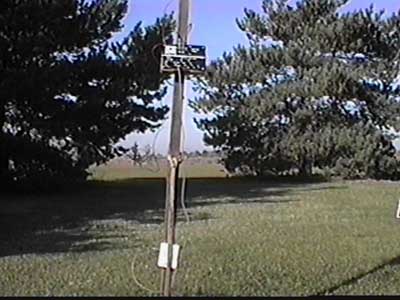
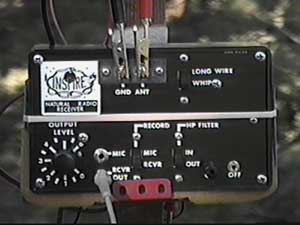
The RS-4 walking stick configuration. This mount is also
made of foam and erector set parts. This is our very first VLF reciever.

This golden find belongs to Ron Hunt. It was designed for research, testing and development of circuits in the field or the workbench. It has an internal battery system (four 9 volt batteries currently) with a built-in charging system. It has a calibrated gain control,
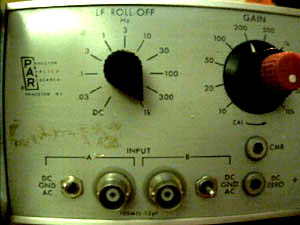

it also has very useful low-pass and high-pass adjustable filters.
This is the latest homemade Receiver. It was designed to handle the
worst of weather conditions. It uses 8 AA batteries and draws about 10
milliamps. This unit is an impoved version of the unit below. For more
info on this receiver, just follow this link: X2000A
page
Unfortunately, I have had problems with this receiver. The design was good but the circuit board I had installed the parts on was of an older type. The moisture buildup problem drove me to abandon it and build a new one. If circuit was built on a double-sided pc board with one side being the shield, it would have worked a lot better. I have started to work on an improved version of this unit with many modifications to the circuitry.
I don't have a name for it yet. I designed this receiver while I was
living in Oregon. It uses several
low-pass stages for filtering in between the one FET and both bipolar transistors.
It is very sensitive unit housed in an outdoor satellite converter box
which is hermetically sealed. I have been using this receiver for all of
my VLF recordings since 1998. The ouput
is tied to the input through a high-pass filter to feed the WWV receiver
with a signal. Here are a couple pictures of it. I have a schematic
of it also.

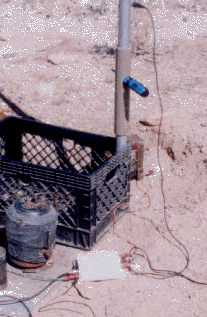

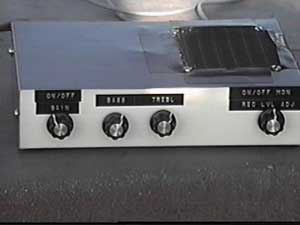
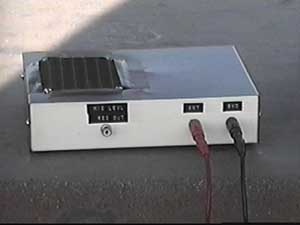
This Receiver was also built with Radio Shack parts, the electronic
design is a little different from the
INSPIRE RS-4.The purpose of this unit is mainly to hear VLF without
the hassle of hooking up a
bunch of wires, grounds, speaker amplifier, (to record from it, it
must be grounded). It has separate
level controls for recording and monitor speaker output, also bass
and treble controls. It uses binding
post / banana jacks for antenna and ground connections.
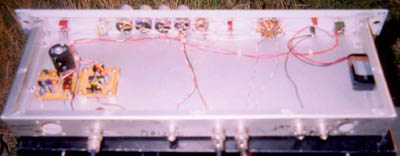
This Receiver is designed for VLF data taking, it has a built-in mixer,
time stamp pushbutton switch, high pass filter, 1/4" microphone jack
on the front panel. It also has level controls for the built-in E-Field
receiver, external B-Field receiver, WWV receiver, and microphone.
all of the connections are BNC type, it can be configured for stereo
or mono recording with a flip of a switch.

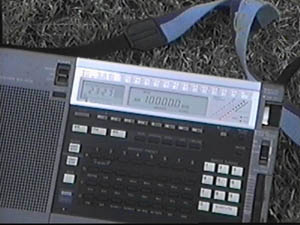
This is the backup WWV receiver, Sony model ICF-2010